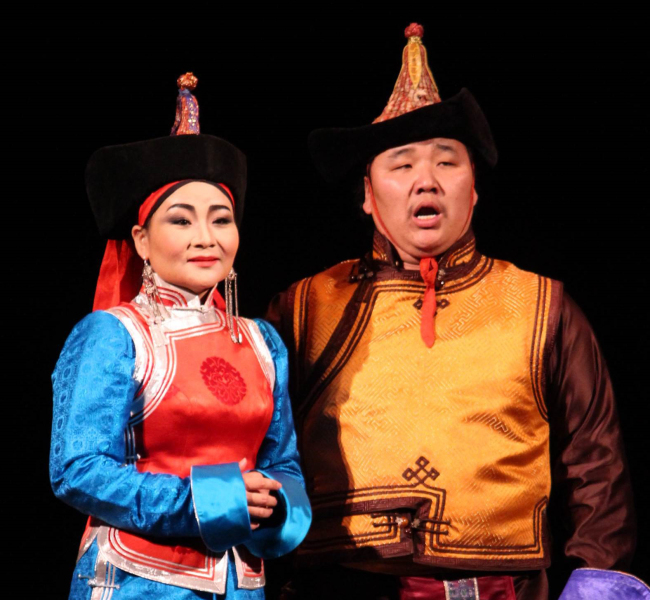The trees died. The wells went dry. Sand dunes blew in and covered once-lush pasture. Watercourses stopped running, lakes shrank. In some places groundwater levels fell up to 100 metres.
Many factors, all of them human-induced, are blamed for the rapid desertification of the Ordos region of Inner Mongolia, among them urban development, overclearing and overgrazing of the land and climate change. And one more big one: coal.
During the decade to 2013, according to a study by Greenpeace, a huge coalmining and liquefaction operation sucked some 50 million tonnes of groundwater out of aquifers under the arid region and pumped much of it, heavily polluted, into waterways. The culprit was the world’s biggest coalminer, the Chinese state-owned Shenhua Group – the same group that now proposes a major new coalmine, the Watermark mine, on the rich agricultural lands of the Liverpool Plains in north-western New South Wales.
Local landholders and environmentalists are concerned about its effects on their groundwater, among other things. And with some reason.
In Mongolia, a couple of local Chinese environmental NGOs attempted to bring a public interest court case against Shenhua. You might call it “lawfare”. But two courts refused to hear the case. The groups were, in our terminology, denied “standing”.
It didn’t end there, though. Shenhua subsequently responded to the findings of the Greenpeace investigation and the attendant bad publicity, promising to reduce its water use, although it remains unsustainably high, according to Greenpeace and other experts; to stop sucking it from the failing aquifer; and to clean up its waste water.
More significantly, six months after the release of the Thirsty Coal investigation, China’s Ministry of Water Resources produced the first national plan limiting coal expansion and taking back much of the regulatory power of the provinces. The new plan mandated that all large coal projects include a water resource appraisal based on a centrally determined regional water capacity. We might call it a national “water trigger”.
None of this is to say Shenhua will behave as badly as it did in Mongolia, if and when it gets the final go-ahead to mine up to 10 million tonnes a year of coal for 30 years from under the Liverpool Plains. But its record indicates it would if it could.
And let us not assume that Shenhua is inherently more cavalier than other mining companies, state-owned or public, about the environment or human rights. Without adequate oversight, what you get is Ordos, Mongolia; Ok Tedi, Papua New Guinea; Bento Rodrigues, Brazil; or Wittenoom, Western Australia. Or countless other examples.
Anyway, China now has a national water trigger, as does Australia. For the time being, at least.
In 2013 the Greens and Tony Windsor, the member for New England, were able to use their clout in the hung parliament to push through a change to the Environment Protection and Biodiversity Conservation (EPBC) Act to give the federal government greater power to examine and regulate the impacts on water resources of coalmining and coal seam gas developments.
As Windsor notes, they managed to get it through “despite constant lobbying by Shenhua and other mining companies in an attempt to block the water trigger from being part of the environmental approval process”.
He continues: “There was an independent scientific committee, funded to the tune of $200 million, to carry out bioregional assessments of sensitive areas where there were risks to water resources. [Former Labor environment minister] Tony Burke actually initiated assessments in five sensitive areas, of which the Liverpool Plains was number one.”
The addition of the water trigger was hailed by conservation groups and farmers as a valuable addition to federal environmental regulation.
Another valuable measure in the EPBC Act – not only to safeguard the environment but also to protect against corruption – is section 487(2), which provides for third parties to go to the courts to challenge development decisions. It was introduced under the Howard government.
But when the Abbott government was elected two years ago, it was determined to get rid of both these measures, along with other federal protections.
The section giving standing to third party appellants was to be dumped. The government line was that green groups were engaging in “lawfare” against development, particularly coal projects. Under the government’s proposed change, environment groups – as well as others not usually considered greenie organisations, such as the National Farmers’ Federation – would be denied standing to mount such challenges.
And last May, Environment Minister Greg Hunt introduced a bill that would “allow the minister to accredit state and territory approval decisions on large coalmining and coal seam gas developments that are likely to have a significant impact on a water resource (commonly known as the ‘water trigger’)”.
It was part of a larger handoff of responsibility for environmental decision-making to the states. The government had a slogan for this move. They called it the “One-Stop Shop” and claimed it would cut the time and cost associated with getting up developments by reducing duplication between state and federal agencies and cutting “green tape”.
In reality, though, it was simply a means of shutting down opposition.
To date, Labor and the Greens and a few crossbench senators have stopped the government from enacting the changes. The hope was that in the face of this opposition and under the new leadership of Malcolm Turnbull, the government might back off.
Recent indications, though, are otherwise. A government-dominated senate committee charged with considering the merits of the plan to remove legal standing from conservation groups rushed out its report on Wednesday this week. The government members recommended the government press ahead with the bill. Labor and Greens members issued dissenting reports reaffirming their opposition. That was to be expected. More interesting was the haste.
The committee’s Labor deputy chairwoman, Anne Urquhart, complained the government used its numbers in the committee to cancel public hearings and bring forward the reporting date so it fell in a non-sitting week. “The government has shown absolute contempt for due process…” the senator said.
More than 20,000 individuals, organisations and academic experts had expressed concern in their submissions to the committee, but the government had shut it down before a single hearing has been held.
“While we might have a new prime minister,” Urquhart said, “this debacle shows the Abbott-era anti-environment policy continues unabated with the radical right of the Liberal party still calling the shots.”
It certainly looks as though the anti-environment forces in the government are making a statement of intent, suggests the Greens’ senator Larissa Waters.
In the previous sitting week, National Party senator Matthew Canavan moved a motion calling on the Labor Party to end its opposition to the proposal to remove legal standing from opponents of mines.
“It was a proxy vote on the bill, essentially. And the government came up two votes short,” says Waters. “And the other EPBC bill, to give away approval powers to the states, is listed for next week.”
Whatever else might have changed since Malcolm Turnbull became prime minister, the government’s commitment to protecting the fossil fuel industry from scrutiny of its environmental impact remains as strong as ever, she says.
Fortunately, Waters said, the senate remains “pretty solid” in its opposition to the changes, particularly those relating to the water trigger.
That is some comfort to the opponents of the Shenhua mine, but not much, according to Tony Windsor.
The independent scientific process of assessment he envisioned, which the previous government set in train, has been “bastardised”, he says. “Those assessments have been slowed down, financed down. In my view they’re operating in name only now, not doing the scientific work they were supposed to do. It’s a desktop exercise now, using the information supplied by the miners.”
The government would say otherwise: that since it was granted an exploration permit in 2008, the Shenhua proposal has been the subject of four reviews, including two by the independent expert scientific committee.
Questions remain, however, about the potential effects of the mine on water resources in the Liverpool Plains.
Opponents of the mine, farmers in particular, point to the impact of Whitehaven’s nearby and smaller Werris Creek mine. The company promised it would cause a drop in groundwater of just 10 centimetres. The fall has been between 4.5 metres and 15 metres.
The operators blame drought. But Doug Anderson, principal groundwater engineer with the Water Research Laboratory of the University of NSW, concluded at least 25 per cent of the problem was attributable to the mine. He was also very critical of the modelling done on the likely impact of the mine.
Another independent expert on mining’s effects on water, Dr Sebastian Pfautsch of Western Sydney University’s Hawkesbury Institute for the Environment, is also highly critical.
“Whenever you dig a big hole in the ground, you are likely to impact groundwater,” he says. “So you have to lower the groundwater level around your mine if you want to have a dry operation.”
This is done by sinking bore holes outside the perimeter of the mine. But the bores don’t just dewater the mine, they also dewater the surrounding countryside.
He talks about the “cone of extraction” or the “thickshake effect”, as it is also called. “When you suck a thickshake through a straw,” he says, “you see it lowers the level of the liquid outside the straw.”
The extent of this effect depends on variables of geology and the amount of water and flow rates in the groundwater aquifers. In four years working with Rio Tinto at its West Australian iron ore pits, Pfautsch found this lowering of the water table could extend many kilometres.
After his work in WA, the mining company installed “many kilometres of pipes to reintroduce some of that water into the environment, to prevent vegetation from dying”.
But with the Watermark project, he says, “Shenhua have not addressed these issues properly. Everything is concentrated on the mine itself.”
Pfautsch has serious concerns about the impact on the nearby Breeza State Forest and surrounding agricultural land. But there is no indication that either the federal or NSW governments are listening.
“My guess is they’ll get the final go-ahead over the Christmas-January period,” says Windsor.
Still, he maintains the hope the project will be canned, not as a result of government action here, but because Shenhua decides it’s not worth the bother.
“I hear rumblings the Chinese are looking for a way out,” he says. “They’ve been going on this for almost a decade now. They thought they’d be mining within a few years.”
He notes the economics of coal have changed in that time. China’s need for imports has faded. “And they’re having such difficulty with the first stage of this mine.
“The money coal is in the second stage, which is below the first stage, and they’ve got Buckley’s of ever getting to that,” says Windsor. “I reckon back in China they’re doing their homework and figuring that if they only get the okay for half a mine, then have to fight for the rest of their lives for the second half, they’ll let it go.”
And what if he’s wrong, and the company does decide to proceed?
“Well, that’s when the civil unrest starts,” says Windsor.
He offers a scenario in which hundreds or thousands of opponents occupy the mine site, probably the high ridge in the middle of it.
“Equally important as the water is the cultural heritage of the Aboriginal community. There are these massive grinding stones on the ridge. They overlook the floodplain for about 50 kilometres. They’re the size of double-decker buses,” he says. “And they’re right in the middle of one of the proposed pits. Shenhua is saying they’ll remove and relocate them.
“I think what will happen – and I’m happy to be part of it – is there will be a move on the grinding stones and people will occupy the space to stop it. The pressure will come on government then, over the unfinished scientific work, the cultural issues. Will they sool the police onto the Indigenous people and others to allow the Chinese to take back their land? That’s not a good look.”
It could prove to be a salutary lesson in democracy for the Chinese, state-owned mining giant. In Australia, unlike in Mongolia, you don’t always get your way just because the government is on your side.
Source://www.thesaturdaypaper.com.au









